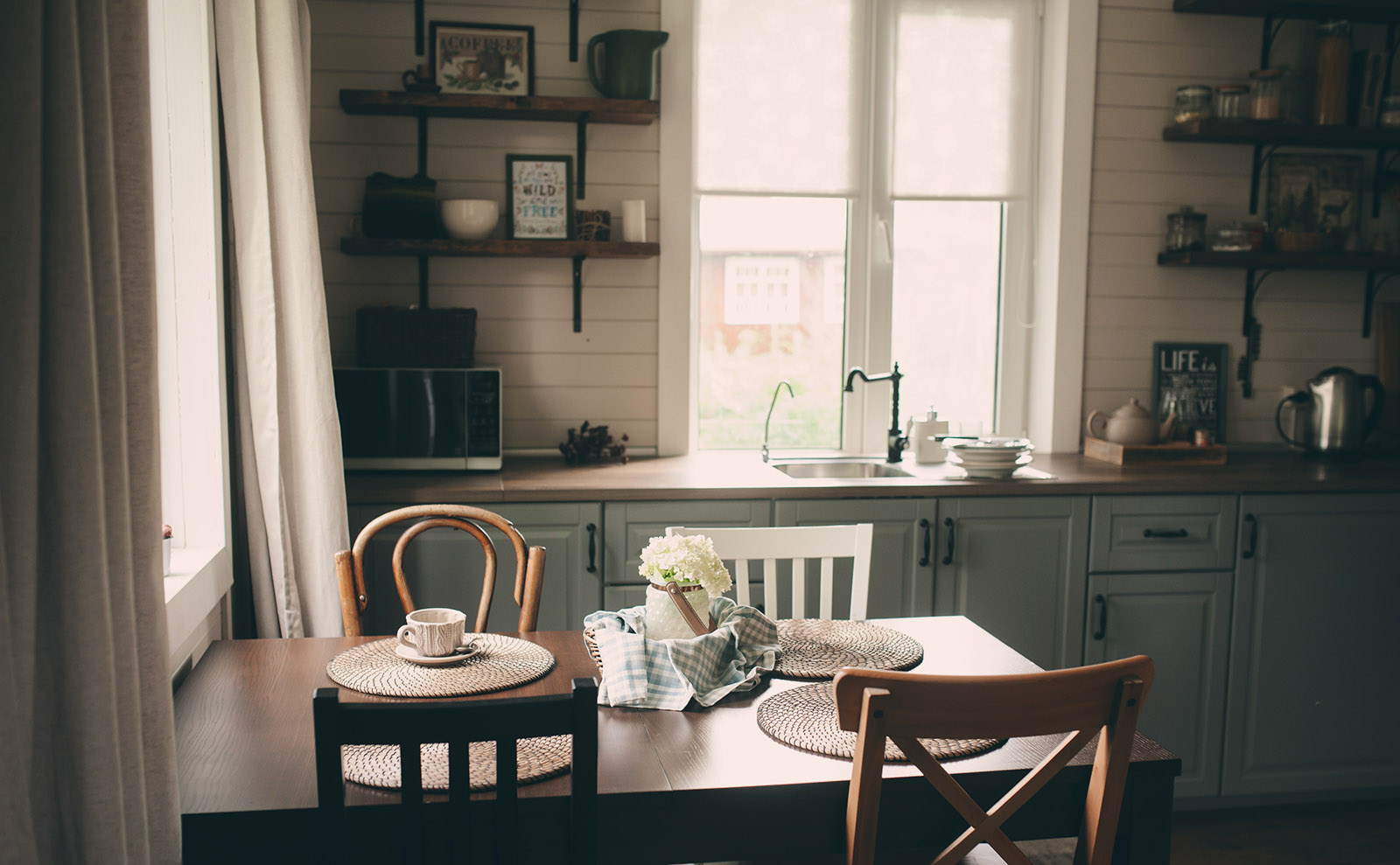
Armchair travel around the world!
Start your reading adventures with our FREE Reading Atlas.

- Around the World in 14 Books
- 7 Thrilling Book Series
- 6 Audiobooks That Are Like Theater For Your Ears



Food and drinks are some of the easiest ways — and the most fun— to vicariously experience another culture. When you add a great book to the mix, you've got the makings of a perfect evening. In Food+Fiction, we recommend a delicious read and a related recipe so you can try the taste of different destinations in your own kitchen.
This post is part of our Food+Fiction series.

The Ballad Novels by Sharyn McCrumb are all set in the mountains of North Carolina and Tennessee. Taking their titles from country ballads, they stitch together local legend, facets of rural life, and richly imagined characters into irresistibly atmospheric Southern Gothic tales.
Although the character Nora Bonesteel plays only a supporting role in a handful of the stories, she looms large in the imagination. Inspired by a real-life friend of the author, Nora is a keeper of legends, a repository for mountain history and long-told stories that must not be forgotten.
Her body is small, but she wields an intuition as lethal as a finely-honed axe. Her gift of the sight sets her apart, and she lives alone with nature as her primary — and most beloved — companion. She weaves; she knits. She reads the poetic novels of Thomas Wolfe and watches soap operas, pleasing only herself and happy to do so.
But should someone in need come calling, she takes care of them with the same diligence she tends to herself.
In She Walks These Hills, Nora watches over the troubled ghost of Katie, a young girl who will never age, doomed to walk the hills in sorrow. Later, when weary stragglers appear at her mountaintop home, Nora beckons them in, warming them by her fire and nourishing them with homemade food.
If an occasion calls for a celebration — or a sad story needs to be told — Nora might very well pass around a bowl of cool, creamy banana pudding to sweeten the conversation or lift a heavy heart.
After all, banana pudding is a must-have at potlucks, weddings, funerals, and cookouts from Alabama to West Virginia, in flatlands and mountains alike. Delightfully cold from the fridge on a hot day, it’s been a staple in kitchens of the South since the late 1800s when steamships brought bananas across the sea to southern ports.
Then in 1921, Ms. Laura Kerley of Bloomington, Illinois, created a recipe that added crispy Nabisco Nilla Wafer to that tender vanilla-infused custard. By the 1940s, Nabisco had institutionalized the original recipe on its yellow-and-red box — and it still appears there today.
No one would fault you for taking the traditional route; after all, that recipe has been feeding people through life’s milestones for more than a century. But if you want what cookbook author Ronni Lundy calls a ‘hypnotizingly good’ version of banana pudding, we encourage you to try this recipe from The Shack in Staunton, Virginia.

Serves 8
Pudding:
Banana Bread:
Assembly:
Start the gelatin. In a large bowl, whisk the egg yolks, sugar, and salt together; set aside. Pour 1/4 cup of the cream into a small bowl. Sprinkle the gelatin over the cream and stir with a fork until it’s incorporated. Let it sit for 5 minutes. Perhaps sing the song ‘Blue Moon of Kentucky’ to yourself while you wait.
Cook the gelatin. Pour the remaining cream into a saucepan and whisk in the gelatin-cream mixture. Scrape the seeds from the vanilla beans into the cream. Heat over medium-low heat, bringing the cream to a point just under a simmer, whisking every so often to incorporate the gelatin.
Finish the pudding. Remove the pan from the heat and very slowly drizzle the cream into the egg mixture while whisking constantly. Pour the mixture through a fine-mesh strainer set over a clean bowl, and transfer it to a refrigerator to chill. For the first hour, whisk the pudding every 15 minutes to incorporate any skin that forms on top. Then cover the pudding with plastic wrap after the last whisk, pressing the wrap directly onto the surface. Let it chill for 3 hours. It will be about halfway set at that point.
Prep the bananas. Preheat the oven to 300F/150C and lightly grease a 1-pound (8 1/2 X 4 1/2-inch) loaf pan with butter. Peel the bananas and place them in a blender with the miso, whole egg, and brown sugar. Blend until the ingredients are combined and smooth.
Make the banana bread. Combine both flours and the baking soda in a large bowl. Gently stir the banana mixture into the flour until just incorporated, and then drizzle in the melted butter. Be careful not to overmix; they can make the bread less tender. Pour the batter into the prepared loaf pan and bake for 30 to 35 minutes. The bread is done when a toothpick inserted into the center comes out moist but not wet. Turn out on a rack and allow to cool completely. Use your hands to break it into coarse crumbs. We will not judge if you eat a few bites.
Assemble. In either individual mason jars or a single large baking dish, arrange alternating layers of pudding, bread crumbs, bananas, and vanilla wafers, starting with pudding on the bottom and ending with wafers on the top. Be sure all the banana slices are completely covered by pudding to prevent browning. Refrigerate, covered, for 4 hours or overnight before serving, so the pudding can finish setting.
The woman had been running through the woods a long time. Blood crusted in the briar-cut on her cheek. Her matted hair, a thicket of dry leaves and tangles, hung about a gaunt face, lined with weariness and hunger. A shapeless, dirt-streaked dress that had once been blue gaped over bony wrists and sagged empty at the collarbone. She might have been twenty, but her eyes were old. She was following the deer track that hugged the ridge above the river… Nora Bonesteel stood under an apple tree at the edge of her meadow, watching the woman pass by… For more than seventy years — when the air was crisp and the light was slanted and the birds were still — Nora Bonesteel had caught glimpses of the young woman following the deer track across Ashe Mountain. — Sharyn McCrumb
This is a big ol’ moody slice of Southern Gothic with a dollop of true-crime whipped cream on top. Set in the 1990s, this eerie, gripping story hinges on a North Carolina mountain legend. Back in 1779, a local girl named Katie was kidnapped into the wilderness by the Shawnee. After her escape, she trekked hundreds of miles through the mountains to return to her family — only for tragedy to strike again. Now, her ghost walks the hills. {more}
This haunting mystery (452 pages) was published in August of 2015 by Scribners. The book takes you to the Tennessee mountains. Melissa read She Walks These Hills and loved it; it wouldn't be on our site if she didn't recommend it.
Top image courtesy of Maria Evseyeva/Shutterstock.
Want to keep up with our book-related adventures? Sign up for our newsletter!
Can you help us? If you like this article, share it your friends!
Strong Sense of Place is a website and podcast dedicated to literary travel and books we love. Reading good books increases empathy. Empathy is good for all of us and the amazing world we inhabit.
Strong Sense of Place is a listener-supported podcast. If you like the work we do, you can help make it happen by joining our Patreon! That'll unlock bonus content for you, too — including Mel's secret book reviews and Dave's behind-the-scenes notes for the latest Two Truths and a Lie.
Join our Substack to get our FREE newsletter with podcast updates and behind-the-scenes info — and join in fun chats about books and travel with other lovely readers.

We'll share enough detail to help you decide if a book is for you, but we'll never ruin plot twists or give away the ending.
Content on this site is ©2025 by Smudge Publishing, unless otherwise noted. Peace be with you, person who reads the small type.